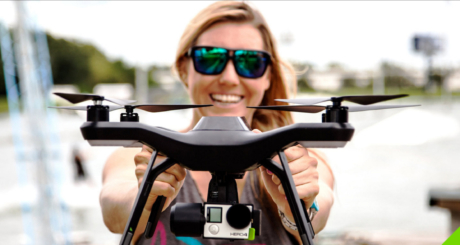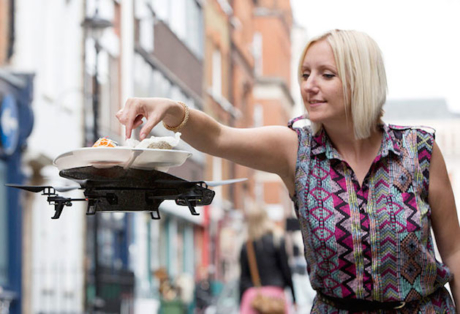
Tomorrow is the Second Annual International Drone Day!
So much has changed since the first International Drone Day. Last year, the message was “Drones Are Good.” The first International Drone Day came at a time when people were concerned about privacy, safety, spying, crashing and data being stolen. It was not uncommon for strangers to approach me as I flew my drone and say, “Who are you trying to spy on?”
In just a year, there has been a massive shift in public perception. These days, I’ll be out flying and strangers will approach me to say something like, “That’s really cool! How long can it fly, and how much does it cost?”

The first International Drone Day was intended to educate people about how drones can be used for good, like using aerial cameras to do otherwise dangerous inspections, gathering data that allows farmers to make decisions about the health of their crops, or carrying out search and rescue operations.
Within that year, I’ve written about so many more creative and life-changing uses for drones. Yuneec’s drones are being used to help scientists gather whale DNA in a noninvasive manner by hovering drones a few yards over them as they come up for air. In Africa, elephants have a tendency to trample on farmland, and farmers often have no choice but to shoot them. Since elephants are afraid of the sound of drones, DJI has given drones to African farmers, which farmers fly towards elephants to not only ward them off, but protect them. FLIR’s thermal cameras for drones identify hotspots and help firefighters see the safest place to enter a burning building. Drones operated by Flirtey and Matternet are delivering medical supplies to people in rural areas.
Nowadays people these days have no doubt that drones are good. International Drone Day worked.

This year, the focus is on policy and bringing the drone community together in support of laws that increase technological innovation. Right now, it is illegal to fly a drone for commercial purposes without a Section 333 exemption, an arduous paperwork process that even requires the operator to have a pilot’s license. (Most people, including the Federal Aviation Administration, recognize that the same skills needed to pilot manned aircraft don’t translate to operating a drone). The FAA in June is expected to come out with rules directing how drone operators can run a business using a drone — without needing a pilot’s license. The policy focus this year is also about getting our government on the same page so states don’t create laws that contradict the FAA’s work. This year we’ll also learn more about plans for drone air traffic control, so our national airspace remains safe.

Last year, I celebrated from the main event just outside of Las Vegas, Nevada. This year, I’ll be celebrating from my own city of San Francisco. But I won’t feel any less connected. In fact, I feel more connected than ever. Throughout the year, the number of people interested in drones has grown exponentially. There are more groups springing up in cities like San Francisco, in suburbs, in other countries and even online. Because of the Internet, I’ve become friends with people around the world in various groups like a Slack channel for commercial drone operators, a Facebook group for women in drones and websites for photographers to share and critique aerial photos.
You can get involved too. Whether you have never seen a drone in person yourself, or whether you’re an expert using drones everyday for your business, it’s important you get involved. Show that drones aren’t a passing fad, but are a technology that makes this world a more efficient, safer, smarter place to live in. Your involvement tells the world that “Drones are good.”

Written by The Drone Girl, Sally French
Read more about Sally on LinkedIn











